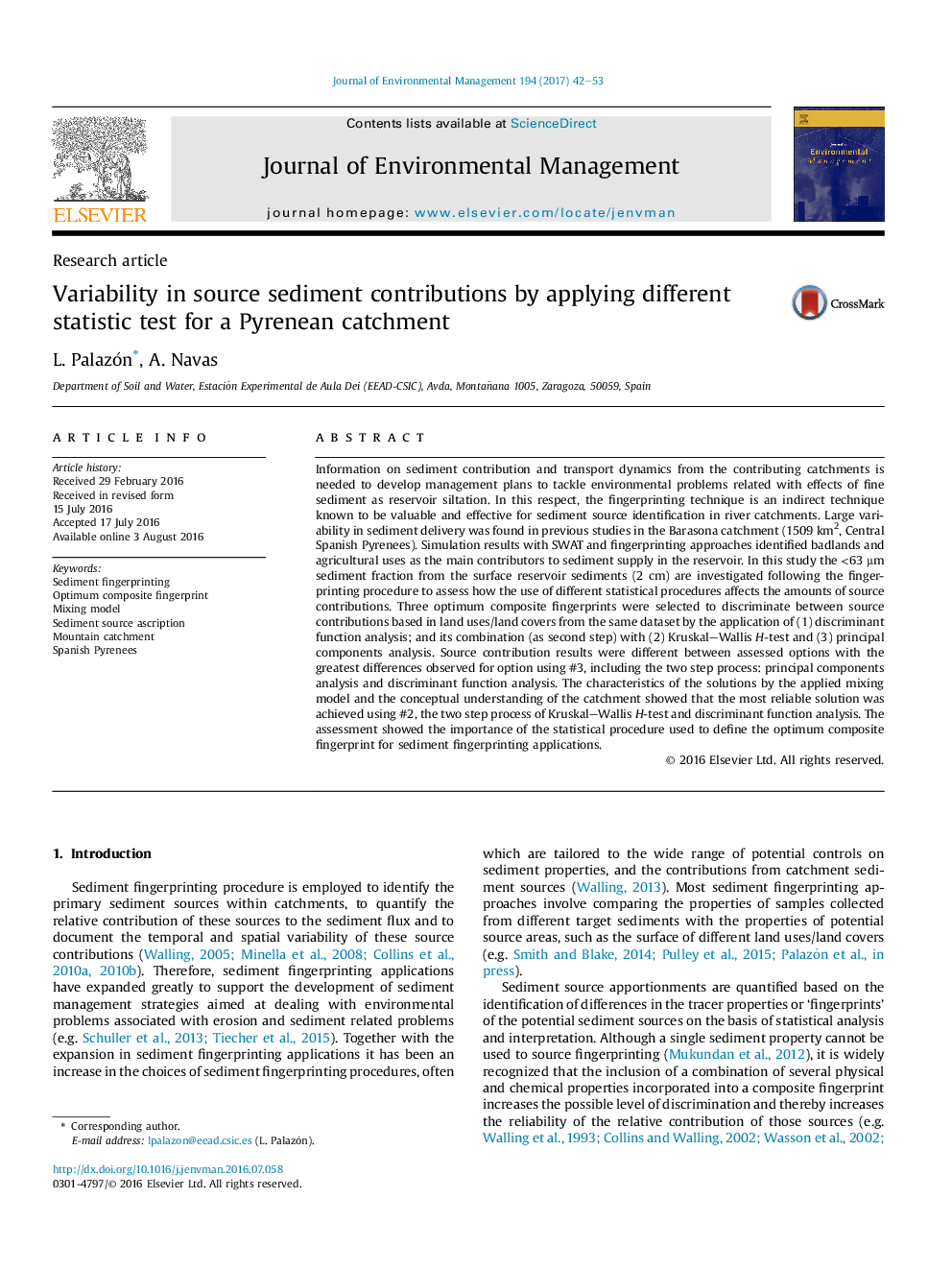| کد مقاله | کد نشریه | سال انتشار | مقاله انگلیسی | نسخه تمام متن |
|---|---|---|---|---|
| 5116917 | 1485221 | 2017 | 12 صفحه PDF | دانلود رایگان |
- Fingerprinting procedure identifies the contributing sediment sources.
- Different statistical tests selected different optimum composite fingerprints.
- Apportionments are sensitive to selected optimum composite fingerprints.
Information on sediment contribution and transport dynamics from the contributing catchments is needed to develop management plans to tackle environmental problems related with effects of fine sediment as reservoir siltation. In this respect, the fingerprinting technique is an indirect technique known to be valuable and effective for sediment source identification in river catchments. Large variability in sediment delivery was found in previous studies in the Barasona catchment (1509 km2, Central Spanish Pyrenees). Simulation results with SWAT and fingerprinting approaches identified badlands and agricultural uses as the main contributors to sediment supply in the reservoir. In this study the <63 μm sediment fraction from the surface reservoir sediments (2 cm) are investigated following the fingerprinting procedure to assess how the use of different statistical procedures affects the amounts of source contributions. Three optimum composite fingerprints were selected to discriminate between source contributions based in land uses/land covers from the same dataset by the application of (1) discriminant function analysis; and its combination (as second step) with (2) Kruskal-Wallis H-test and (3) principal components analysis. Source contribution results were different between assessed options with the greatest differences observed for option using #3, including the two step process: principal components analysis and discriminant function analysis. The characteristics of the solutions by the applied mixing model and the conceptual understanding of the catchment showed that the most reliable solution was achieved using #2, the two step process of Kruskal-Wallis H-test and discriminant function analysis. The assessment showed the importance of the statistical procedure used to define the optimum composite fingerprint for sediment fingerprinting applications.
Journal: Journal of Environmental Management - Volume 194, 1 June 2017, Pages 42-53
